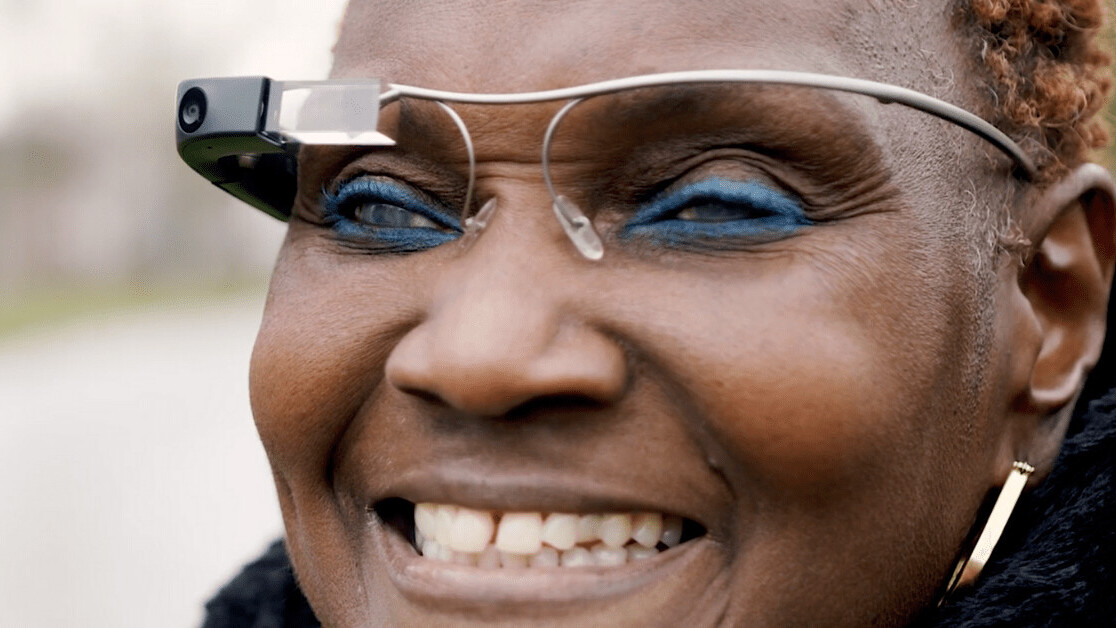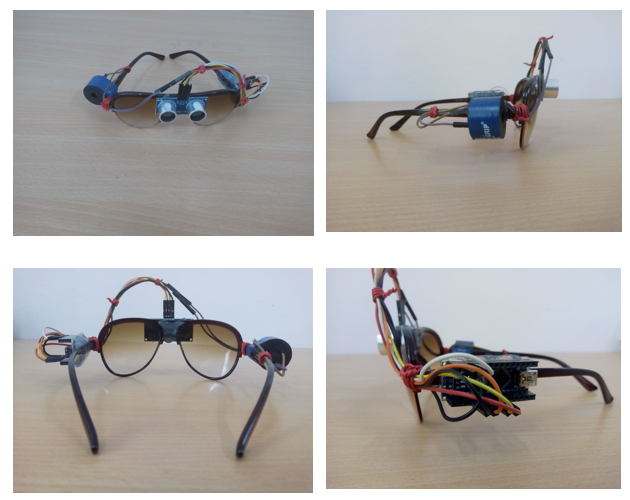The Future of Assistive Technology for the Blind: Empowering Independence
Wiki Article
Discover Advanced Assistive Tools for People With Aesthetic Impairments
The landscape of assistive modern technology for people with visual disabilities is evolving rapidly, presenting a range of innovative tools that boost freedom and interaction. From wise glasses that perfectly merge aesthetic input with acoustic assistance to advanced navigation applications that redefine spatial recognition, these tools are improving opportunities.Smart Glasses Innovations
Smart glasses stand for a substantial innovation in assistive technology for people with visual problems. These innovative tools integrate numerous features created to boost the individual's communication with their environment. Geared up with cameras and sensors, smart glasses can catch real-time aesthetic information, which is after that refined and conveyed to the individual via sound feedback or haptic feelings. This capability permits individuals to get prompt descriptions of their surroundings, enhancing their capacity to browse and engage with the world.
Additionally, improvements in expert system have actually better enhanced the capabilities of clever glasses. Artificial intelligence algorithms can identify faces, reviewed message, and determine items, making them vital tools for daily jobs. Customers can obtain acoustic hints that supply context regarding their atmosphere, fostering independence and confidence.
In addition, the ergonomic layout and light-weight nature of lots of smart glasses make them suitable for long term usage, guaranteeing comfort while enhancing functionality. As these gadgets remain to evolve, they hold the potential to change the method individuals with aesthetic disabilities experience their day-to-days live, bridging the void in between ease of access and technology. The recurring r & d in this area guarantee to expand the opportunities for wise glasses, making them a vital component of modern-day assistive gadgets.
Navigating Application and Tools
Countless navigation applications and tools have actually become essential sources for individuals with aesthetic impairments, considerably enhancing their capacity to pass through strange atmospheres. These modern technologies take advantage of GPS performance, audio signs, and real-time data to give individuals with specific navigation help.One noticeable instance is the Aira application, which attaches customers to skilled agents that can give aesthetic descriptions of surroundings and navigating guidance through a live video clip feed. This service improves the individual's spatial understanding and confidence while navigating. An additional notable tool is Seeing Eye GPS, which provides voice-guided navigating and sights, allowing individuals to gain access to important info about their environments.

As innovation remains to advance, the development of extra innovative navigating tools assures to additional equip people with aesthetic impairments, facilitating smooth mobility and combination into diverse settings. Such developments contribute in advertising an extra comprehensive society.
Braille Innovation Developments
In recent times, improvements in Braille innovation have actually significantly changed exactly how people with visual disabilities access details and engage with the globe around them. The advancement of mobile Braille screens has transformed analysis by enabling individuals to connect wirelessly to computers, smart devices, and tablets. These devices convert text into Braille in real-time, allowing seamless communication with electronic material.
Moreover, ingenious Braille printers have emerged, improving the production of responsive materials. Modern embossers are quicker and extra effective, enabling the rapid development of Braille documents and instructional products. This effectiveness decreases the moment and expense connected with creating Braille resources, making them much more available to colleges and organizations.
In addition, the combination of Braille with various other modern technologies, such as expert system and maker knowing, has opened up new opportunities for individualized learning experiences. Voice acknowledgment and synthesis technologies can complement Braille, supplying an inclusive strategy to information circulation.
As the demand for comprehensive education and work environment environments grows, these technological innovations play a vital role in equipping individuals with aesthetic problems, ensuring they have equivalent access to details and chances in different facets of life.
Wearable Instruments for Independence
A growing array of wearable devices is enhancing independence for individuals with aesthetic disabilities, offering cutting-edge remedies that enhance navigating and daily living. Braille displays and notetakers. These devices utilize innovative modern technologies to supply real-time comments and assistance, advertising autonomy in different settings
Wearable modern technology additionally includes smartwatches that can be set with availability attributes, enabling individuals to get notices, track their places, or even call for assistance with the touch of a button. Moreover, some tools integrate expert system to analyze the setting, offering sound descriptions of neighboring items or people.
Voice-Activated Assistive Solutions
Leveraging voice-activated assistive options has changed the landscape of support for individuals with aesthetic impairments, providing hands-free communication and access to a variety of jobs. These technologies make use of natural language handling and man-made intelligence to make it possible for individuals to perform daily activities via straightforward voice commands.
In addition, Voice-activated assistive devices recent improvements in voice acknowledgment precision have enhanced the customer experience significantly, accommodating diverse accents and speech patterns. This inclusivity guarantees that even more people can benefit from these technologies, promoting a better feeling of freedom.
Conclusion
To conclude, the advancement of sophisticated assistive tools significantly enhances the independence and lifestyle for people with aesthetic problems. Technologies such as clever glasses, navigating apps, Braille innovation, wearable devices, and voice-activated services jointly cultivate an even more comprehensive environment. These technologies equip individuals to navigate their surroundings with confidence and engage more fully with the world, inevitably advertising better ease of access and equal chances for individuals facing visual challenges.The landscape of assistive modern technology for people with aesthetic disabilities is progressing quickly, providing a range of innovative devices that enhance freedom and interaction.Smart glasses represent a significant development in assistive technology for individuals with aesthetic disabilities. As these devices continue to advance, they hold the prospective to change the method individuals with aesthetic disabilities experience their daily lives, linking the space between accessibility and modern technology.In recent years, developments in Braille technology have actually considerably transformed just how individuals with aesthetic disabilities access details and engage with the globe around them. These innovations encourage customers to browse their surroundings with confidence and engage more totally with the world, eventually promoting higher ease of access and equivalent opportunities for individuals encountering visual obstacles.
Report this wiki page